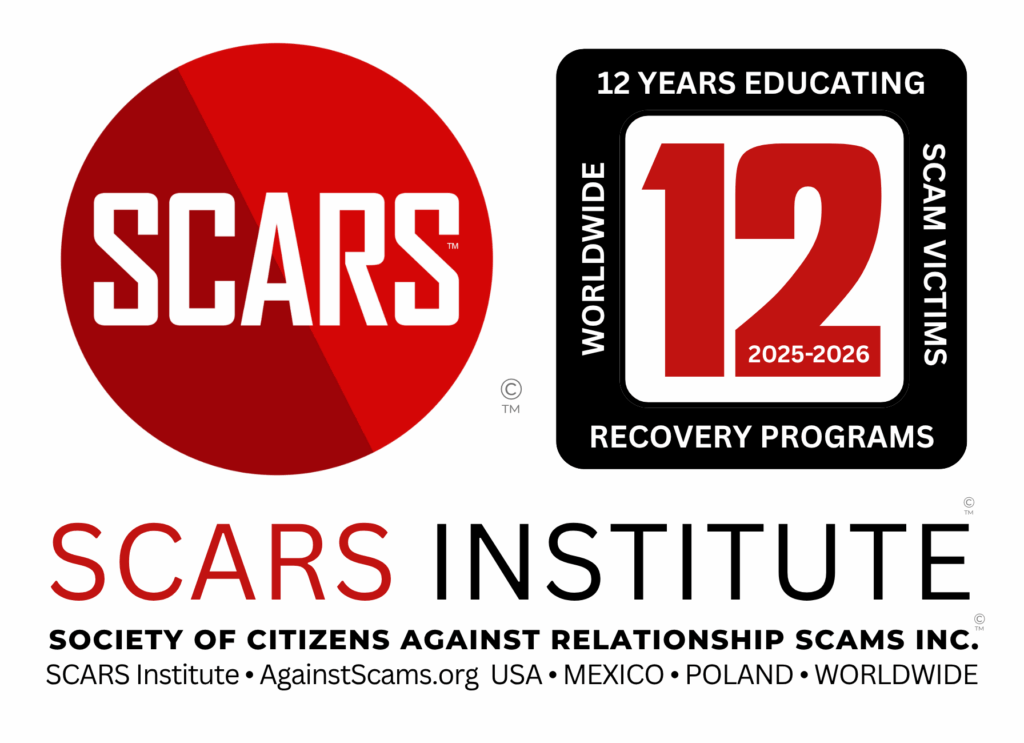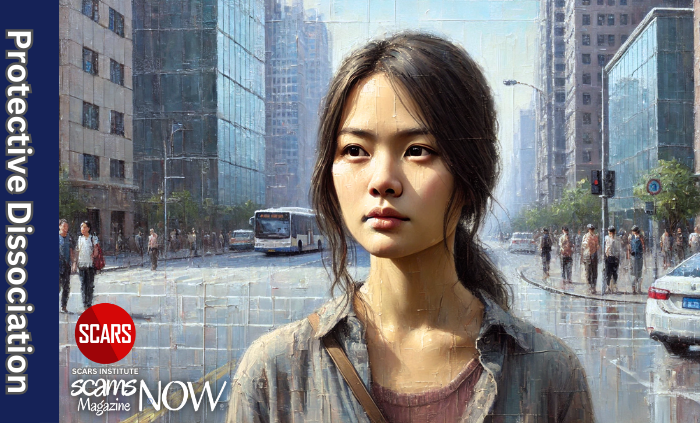Price’s Law and Scam Fraud & Cybercrime Awareness Education
Applying Price’s Law to Scam Awareness: Why Anti-Scam Education Often Fails
Primary Category: Advocacy and Policy
Authors:
• Vianey Gonzalez B.Sc(Psych) – Licensed Psychologist, Specialty in Crime Victim Trauma Therapy, Neuropsychologist, Certified Deception Professional, Psychology Advisory Panel & Director of the Society of Citizens Against Relationship Scams Inc.
• Tim McGuinness, Ph.D., DFin, MCPO, MAnth – Anthropologist, Scientist, Polymath, Director of the Society of Citizens Against Relationship Scams Inc.
About This Article
While Price’s Law highlights the limitations of broad anti-scam awareness campaigns, understanding this phenomenon can help refine and improve educational efforts.
By focusing on the highly engaged minority and creating more targeted, compelling content, organizations can increase the chances of success in their fight against scams and fraud. Though the majority may not engage meaningfully, leveraging the power of the informed few can drive significant change.

Applying Price’s Law to Scam Awareness: Why Anti-Scam Education Often Fails
Price’s Law is a concept suggesting that the square root of a population is responsible for the majority of productive outcomes. When applied to anti-scam awareness education, this law offers a revealing insight: despite widespread campaigns and efforts to educate the public about fraud and cybercrime, only a small fraction—roughly the square root of those exposed—are likely to genuinely engage and absorb the information.
For instance, if 10,000 people are reached by an awareness initiative, only about 100 individuals (the square root of 10,000) will truly understand, internalize, and apply the knowledge. This disproportionately small group of aware individuals suggests that the majority of the population remains either uninformed, disengaged, or uninterested, despite being exposed to the educational content.
This limitation poses significant challenges for organizations, government bodies, and activists working to prevent fraud. With such a small portion of the audience taking actionable steps, many remain vulnerable to scams, explaining the persistent rise of cybercrime and fraud despite the ongoing awareness campaigns.
Why Price’s Law Explains the Failure of Anti-Scam Education
One key reason for the limited success of awareness campaigns is the overwhelming amount of information individuals are bombarded with daily. Scam-related education competes with other priorities, distractions, and misinformation. Many people dismiss the possibility that they could be scammed, thinking it will never happen to them or believing they already know enough to avoid it.
This general complacency is one of the hurdles Price’s Law points to: most of the population doesn’t engage meaningfully with scam education because they don’t see it as immediately relevant. Those who do, as predicted by Price’s Law, are the minority who are either proactive about safety, have experienced a scam, or are naturally more inquisitive and informed.
Furthermore, cybercriminals are becoming increasingly sophisticated in their techniques, making it harder for the unengaged majority to detect scams, even when they’ve been educated. This complexity widens the gap between those who understand the threat (the minority) and those who remain at risk (the majority).
Price’s Law: The Mathematical Basis and Its Application to Awareness Campaigns
Price’s Law, developed by British physicist Derek J. de Solla Price, is a principle that suggests that a small percentage of people are responsible for the majority of outcomes in any given group or system. The law posits that the square root of the number of people involved produces half of the output. For example, if 100 individuals work in a group, roughly 10 of them will produce 50% of the results.
This law has broader applications in various fields such as scientific productivity, business output, and even in societal contributions. The core of Price’s Law is based on the understanding that in any system, talent, productivity, or engagement is unevenly distributed. In practice, this means a minority of individuals contribute disproportionately to a project’s or system’s success.
The Pareto Principle and Price’s Law
Price’s Law is closely related to the Pareto Principle (the 80/20 rule), which suggests that 20% of efforts produce 80% of results. However, Price’s Law takes this further by introducing a square root factor, indicating that as the population or group size grows, the disparity between active contributors and the majority widens even further.
This mathematical insight can serve as a guiding principle for those in the fields of education and awareness. Instead of focusing efforts solely on reaching everyone, it can be more effective to tailor content to the engaged few who are more likely to act and then empower them to spread the message.
How It Applies to Anti-Scam Awareness Campaigns
When applied to awareness education, especially in fields like scam prevention, Price’s Law suggests that only a small fraction of the population will internalize and actively engage with the educational material. Suppose an organization launches an anti-scam campaign targeting 10,000 individuals. Price’s Law predicts that roughly 100 (the square root of 10,000) people will fully absorb the message and act upon it by taking preventive measures or sharing the information.
This discrepancy helps explain why widespread educational campaigns, no matter how well-executed, often fail to generate significant behavioral change across large populations. The reality is that most people either ignore, dismiss, or are indifferent to the information provided, leaving only a small, proactive subset of individuals who engage and protect themselves against scams.
Improving the Reach and Practical Implications for Scam Awareness
While Price’s Law presents a discouraging outlook, it also emphasizes the importance of maximizing the impact on the small engaged group. Here are ways to improve the reach and effectiveness of awareness education:
- Target the Engaged Few: Since only a small fraction will truly absorb the information, focus on empowering this group. Provide them with tools and knowledge that they can use to educate others, effectively multiplying the impact of awareness through peer education.
- Empower the Active Few: Recognize that only a small group will actively engage with scam prevention efforts. Focus on giving this group the resources to further educate others.
- Targeted Awareness: Rather than spreading efforts thinly across entire populations, target groups most likely to engage—such as high-risk industries, tech-savvy individuals, or those who have experienced scams before.
- Tailor Content to Specific Groups: Instead of generic campaigns, use targeted messaging to appeal to individuals more likely to be receptive—those in high-risk industries, tech-savvy individuals, or people who have previously encountered scams.
- Leverage Emotional Appeal: Make scam education more engaging by sharing real-life stories, testimonials from victims, and emotional appeals. This can drive deeper engagement by showing the consequences of ignoring scam risks.
- Simplify Complex Information: Many people disengage when information feels too complex or irrelevant. By simplifying and directly relating content to real-life situations, more people may find it relatable and applicable.
- Maximize Engagement through Peers: Encouraging a grassroots approach where educated individuals become advocates for scam prevention in their communities can multiply the effect of awareness campaigns.
- Ongoing Campaigns, Not One-Offs: Consistent exposure over time can help combat disengagement. Repeated, digestible messages may eventually break through to those who didn’t engage initially. While broad campaigns are less effective at reaching everyone, repeated exposure to scam awareness through multiple touchpoints (media, workshops, online platforms) can gradually increase the size of the engaged audience.
Understanding the limitations of traditional education efforts, especially in scam awareness, can lead to more effective strategies.
Conclusion: Adapting to the Reality of Limited Engagement
Price’s Law sheds light on the limitations of broad awareness campaigns, particularly in areas like scam and fraud prevention. Recognizing that only a small proportion of individuals will internalize and act upon educational content can lead to more targeted, effective strategies. By focusing on empowering the engaged few, organizations can amplify their message and create a more informed and vigilant public. This understanding can help refine future educational efforts, allowing for a more realistic approach to public education and awareness.
-/ 30 /-
What do you think about this?
Please share your thoughts in a comment below!
-/ 30 /-
What do you think about this?
Please share your thoughts in a comment below!
Important Information for New Scam Victims
- Please visit www.ScamVictimsSupport.org – a SCARS Website for New Scam Victims & Sextortion Victims.
- SCARS Institute now offers its free, safe, and private Scam Survivor’s Support Community at www.SCARScommunity.org – this is not on a social media platform, it is our own safe & secure platform created by the SCARS Institute especially for scam victims & survivors.
- SCARS Institute now offers a free recovery learning program at www.SCARSeducation.org.
- Please visit www.ScamPsychology.org – to more fully understand the psychological concepts involved in scams and scam victim recovery.
If you are looking for local trauma counselors, please visit counseling.AgainstScams.org
If you need to speak with someone now, you can dial 988 or find phone numbers for crisis hotlines all around the world here: www.opencounseling.com/suicide-hotlines
Statement About Victim Blaming
Some of our articles discuss various aspects of victims. This is both about better understanding victims (the science of victimology) and their behaviors and psychology. This helps us to educate victims/survivors about why these crimes happened and not to blame themselves, better develop recovery programs, and help victims avoid scams in the future. At times, this may sound like blaming the victim, but it does not blame scam victims; we are simply explaining the hows and whys of the experience victims have.
These articles, about the Psychology of Scams or Victim Psychology – meaning that all humans have psychological or cognitive characteristics in common that can either be exploited or work against us – help us all to understand the unique challenges victims face before, during, and after scams, fraud, or cybercrimes. These sometimes talk about some of the vulnerabilities the scammers exploit. Victims rarely have control of them or are even aware of them, until something like a scam happens, and then they can learn how their mind works and how to overcome these mechanisms.
Articles like these help victims and others understand these processes and how to help prevent them from being exploited again or to help them recover more easily by understanding their post-scam behaviors. Learn more about the Psychology of Scams at www.ScamPsychology.org
SCARS INSTITUTE RESOURCES:
If You Have Been Victimized By A Scam Or Cybercrime
♦ If you are a victim of scams, go to www.ScamVictimsSupport.org for real knowledge and help
♦ SCARS Institute now offers its free, safe, and private Scam Survivor’s Support Community at www.SCARScommunity.org/register – this is not on a social media platform, it is our own safe & secure platform created by the SCARS Institute especially for scam victims & survivors.
♦ Enroll in SCARS Scam Survivor’s School now at www.SCARSeducation.org
♦ To report criminals, visit https://reporting.AgainstScams.org – we will NEVER give your data to money recovery companies like some do!
♦ Follow us and find our podcasts, webinars, and helpful videos on YouTube: https://www.youtube.com/@RomancescamsNowcom
♦ Learn about the Psychology of Scams at www.ScamPsychology.org
♦ Dig deeper into the reality of scams, fraud, and cybercrime at www.ScamsNOW.com and www.RomanceScamsNOW.com
♦ Scam Survivor’s Stories: www.ScamSurvivorStories.org
♦ For Scam Victim Advocates visit www.ScamVictimsAdvocates.org
♦ See more scammer photos on www.ScammerPhotos.com
You can also find the SCARS Institute’s knowledge and information on Facebook, Instagram, X, LinkedIn, and TruthSocial
Psychology Disclaimer:
All articles about psychology and the human brain on this website are for information & education only
The information provided in this and other SCARS articles are intended for educational and self-help purposes only and should not be construed as a substitute for professional therapy or counseling.
Note about Mindfulness: Mindfulness practices have the potential to create psychological distress for some individuals. Please consult a mental health professional or experienced meditation instructor for guidance should you encounter difficulties.
While any self-help techniques outlined herein may be beneficial for scam victims seeking to recover from their experience and move towards recovery, it is important to consult with a qualified mental health professional before initiating any course of action. Each individual’s experience and needs are unique, and what works for one person may not be suitable for another.
Additionally, any approach may not be appropriate for individuals with certain pre-existing mental health conditions or trauma histories. It is advisable to seek guidance from a licensed therapist or counselor who can provide personalized support, guidance, and treatment tailored to your specific needs.
If you are experiencing significant distress or emotional difficulties related to a scam or other traumatic event, please consult your doctor or mental health provider for appropriate care and support.
Also read our SCARS Institute Statement about Professional Care for Scam Victims – click here
If you are in crisis, feeling desperate, or in despair, please call 988 or your local crisis hotline – international numbers here.
More ScamsNOW.com Articles
A Question of Trust
At the SCARS Institute, we invite you to do your own research on the topics we speak about and publish. Our team investigates the subject being discussed, especially when it comes to understanding the scam victims-survivors’ experience. You can do Google searches, but in many cases, you will have to wade through scientific papers and studies. However, remember that biases and perspectives matter and influence the outcome. Regardless, we encourage you to explore these topics as thoroughly as you can for your own awareness.















![NavyLogo@4x-81[1] Price's Law and Scam Fraud & Cybercrime Awareness Education - 2024](https://scamsnow.com/wp-content/uploads/2025/04/NavyLogo@4x-811.png)









![scars-institute[1] Price's Law and Scam Fraud & Cybercrime Awareness Education - 2024](https://scamsnow.com/wp-content/uploads/2025/04/scars-institute1.png)

![niprc1.png1_-150×1501-1[1] Price's Law and Scam Fraud & Cybercrime Awareness Education - 2024](https://scamsnow.com/wp-content/uploads/2025/04/niprc1.png1_-150x1501-11.webp)
